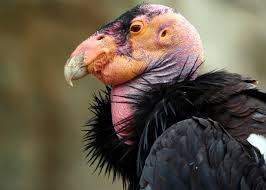 Back to News
Back to News
October 11, 2017
Study Finds One Sick Raven, Extrapolates to Entire California Condor Population
A recent study is making headlines by continuing to beat the drum against traditional ammunition, arguing that the fate of the California condor is at stake. It’s scientific “evidence:” one raven with high blood lead levels.
 Rather than conducting a study of the California Condor, researchers published a study of the blood lead levels of turkey vultures and common ravens in the Journal, The Condor. There’s a glaring problem with this: the authors extrapolate the results of the study to the California Condor. As the authors themselves note, “it has been suggested that surrogate species may not be useful for toxicological investigations due to differential tolerance to lead ingestion and subsequent poisoning among species…”
Rather than conducting a study of the California Condor, researchers published a study of the blood lead levels of turkey vultures and common ravens in the Journal, The Condor. There’s a glaring problem with this: the authors extrapolate the results of the study to the California Condor. As the authors themselves note, “it has been suggested that surrogate species may not be useful for toxicological investigations due to differential tolerance to lead ingestion and subsequent poisoning among species…”
If this shaky methodology weren’t enough, the purpose of the study was to compare the blood lead levels of these non-Condor birds during hunting season and outside of hunting season. Another “oops” is evident here, however. Turkey vultures migrate. According to the authors, they were not able to make such a comparison for turkey vultures because, “deer-hunting season overlaps Turkey Vulture migration in YAT [Yurok Ancestral Territory], confounding our ability to identify the location of contaminant exposure in vultures sampled for blood lead levels during this time…” So, we drop from two questionable surrogates to one as the only comparison made is of the levels for the common raven. Not to let this problem get in the way of a broader-looking study, they do test 137 turkey vultures.
One Raven
How many ravens do they test: 27. That’s not a typo. Between 2009 and 2013, the researchers trap and test 27 ravens. Let’s ignore for the moment that there’s an argument that ravens lower in the dominance hierarchies at food sources are most likely to be trapped and are not necessarily representative of the entire population.
Out of these 27 ravens, only ONE “showed evidence of exposure to lead point sources.” One single raven over five years was found to have exposure to lead. Naturally the authors make no attempt to determine the source of this lead. Instead, they state, “Although our research did not attempt to determine the source of lead in our target species, ingestion of lead ammunition is the most parsimonious explanation…”
There are plenty of problems with this shoddy “study.” One example: it begins with an overtly biased introduction that makes it clear the authors blame traditional ammunition for a range of scavenger woes without presenting any evidence for their opining. Another example: after mentioning that there’s no consensus for what blood lead level is notable and that other research has inconsistently applied these levels, the researchers appear to randomly pick a threshold without defending their choice.
Zero Evidence
The problems are too extensive to list here. However, the most egregious issue here is the argument that the use of traditional ammunition is to blame with zero evidence presented to make this case. This study is another example of lazy methodology seeking to prove the authors’ pre-existing beliefs based on other shaky research. It remains the case that there is no scientific evidence of a population-level impact of traditional ammunition on raptor populations.
You might also like: Fact Sheets and Backgrounders
Categories: BP Item, Featured, Government Relations, Hunting, Top Stories, Where to Shoot, WTS









